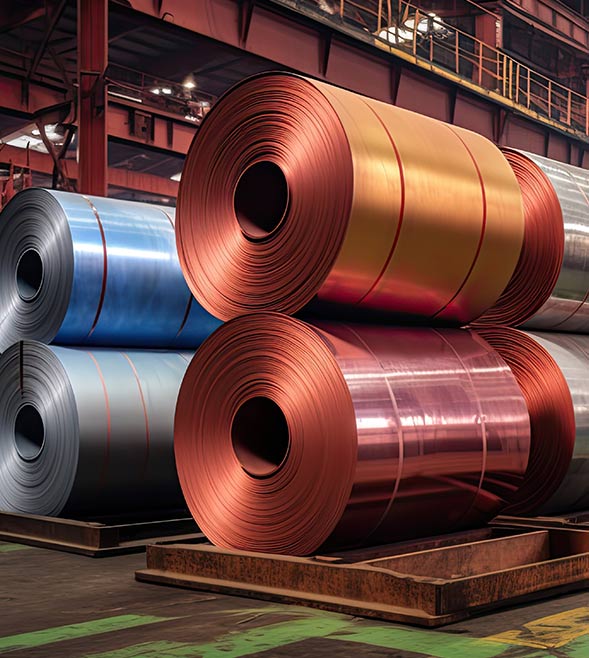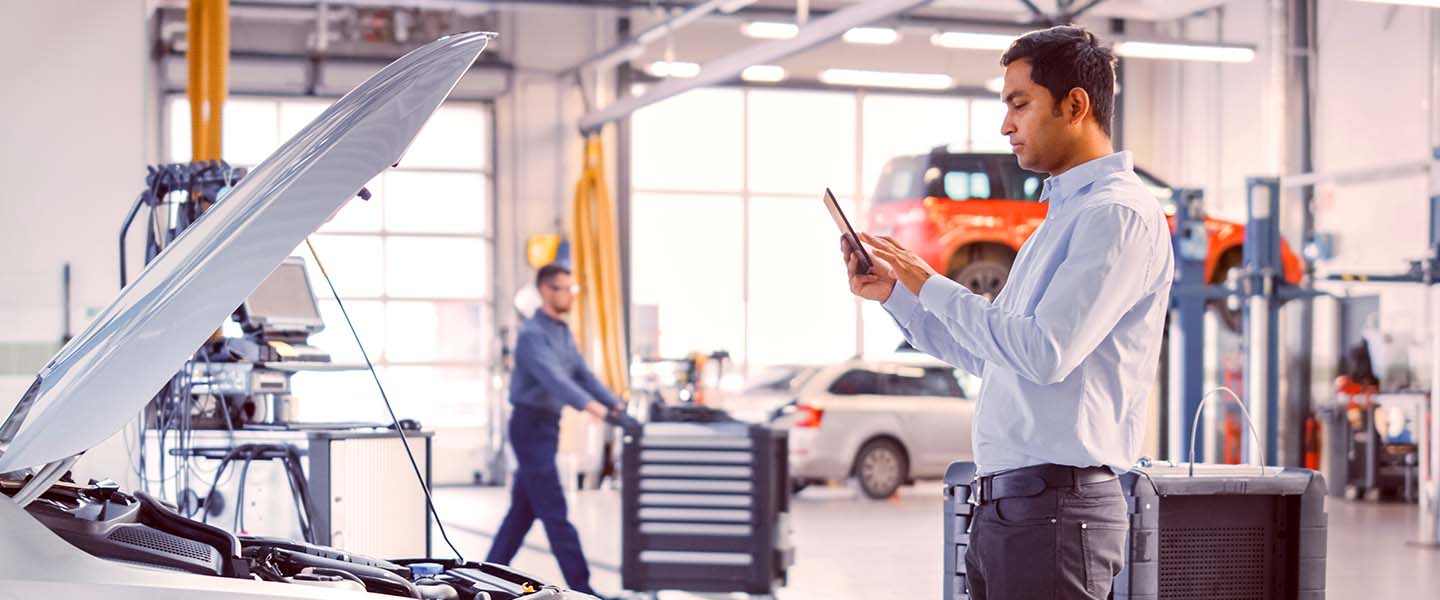-
Business Consulting
Our business consulting specialists offer a comprehensive blend of strategic advisory services. We assess the business, industry, operating model, synergy, skill sets and vision of the organisation and recommend the way forward
-
Digital Natives
Unlock growth with Grant Thornton Bharat's Digital Natives solutions. Customised support for tech-driven companies in healthcare, gaming, and more.
-
Digital Transformation Services
Grant Thornton’s digital transformation services help traditional businesses digitalise their business models with cloud technology, IoT consulting, app development and more DigiTech solutions.
-
Finance Transformation
Using a holistic approach, integrating digitalisation and digital transformation we help clients achieve transparency, control, governance, and faster decision making through real-time data within the business.
-
Human Capital Consulting
Our Human Capital Consulting team harnesses technology and industry expertise to assist in constructing adaptable organisations with transparency, fostering productive and value-driven workforces, and inspiring employees to engage meaningfully in their tasks.
-
Production Linked Incentive Scheme
Production-linked Incentive Scheme by the Indian government is aimed at boosting manufacturing. Grant Thornton Bharat offers varied services across sectors to help businesses avail of this scheme.
-
Public Sector Advisory
Our Public Sector Advisory team has focused streams, aligned with the core priorities of the Government of India. We are responsible for providing innovative and customized technical and managerial solutions.
-
Tech Advisory
We have amalgamated Digital Transformation, IT Advisory & Information Management and Analytics into a new offering, DigiTech.

-
Direct Tax services
Our tax specialists offer a comprehensive blend of tax services, tax litigation, regulatory and compliance services, helping you navigate through complex business matters.
-
Indirect Tax Services
Get tax services by leading tax firm Grant Thornton India. Our indirect tax services include consulting, compliance and litigation services for corporate, international and transaction tax
-
Transfer pricing services
Our transfer pricing services experts provide a range of services from provision of APA services to handling large global assignments including Country by Country reporting.
-
US Tax
At Grant Thornton, we help individuals and dynamic companies deal with US tax laws, which are one of the most complicated tax legislations across the world.
-
Financial Services - Tax
Best financial advisory services, tailored for small and large businesses by the experts having comprehensive knowledge of domestic laws and access to multifaceted tools to provide a valuable results.
-
Financial Reporting consulting services
Our experts have significant hands-on experience in providing IFRS/US GAAP services, end-to-end solutions and support services to fulfil financial reporting requirements.
-
Fund accounting and financial reporting
International operations often lack standardisation and have varied local reporting formats and requirements. Our experts can offer proactive insights, practical guidance, and positive progress and help meet regulatory timeframes.
-
Compliance and Secretarial Services
Our experts can assist in overhauling the entire compliance machinery of the organisation through evaluation of the applicable statutory obligations, monitoring of adequate governance controls, reporting and providing ongoing support.
-
Global People Solutions
As businesses transcend borders, both domestic and global considerations need equal attention. Our interim CFO and financial controller support services help organisations meet the business vision.
-
Finance and accounting outsourcing
Our accounting experts assist organisations in managing their accounting and reporting. Our dedicated Integrated Knowledge and Capability Centre (IKCC), allows us to service both the domestic and global markets efficiently and cost-effectively
-
Compliance Management System
We have automation solutions for you that will allow meeting government requirements and remain diligent, which when failed, can lead to penalties and loss in revenue.
-
Global compliance and reporting solutions
At Grant Thornton Bharat, we meet the challenges of our clients and help them unlock their potential for growth. Our professionals offer solutions tailored to meet our clients’ global accounting and statutory reporting requirements. With first-hand experience of local reporting requirements in more than 145+ locations worldwide, we provide seamless and consistent international service delivery through a single point of contact.
-
Related-party transaction governance
Related-party transactions (RPTs) are common in business structures where organisations engage with their group entities, such as holding companies, subsidiaries, associate concerns, joint ventures, or key management personnel, for various operational or financial purposes.
-
Family Offices & Private Client Services
Grant Thornton Bharat Private Client Services offers tailored advisory for family-owned businesses, focusing on governance, compliance, tax, succession planning, and family office structuring to sustain wealth and preserve legacies across generations.
-
GTMitra: Tax & Regulatory Tool
GTMitra, a specialised tax and regulatory tool by Grant Thornton Bharat, supports multinational businesses in understanding laws and regulations for effective growth strategies.
-
Labour codes
Labour codes solutions help you transition through the new legislation. At Grant Thornton, we help businesses divide their approach to make sure a smooth transition.
-
Alerts
At Grant Thornton India, with the help of our tax alerts, we help to provide updates on how to minimise your tax exposure and risks.
-
Unlocking opportunities: India investment roadmap
The India Investment Roadmap resource is designed to navigate the complexities of Indian tax and regulatory laws, providing seamless guidance and a comprehensive set of solutions to ensure a smooth process for investors aiming to establish or expand their presence in India.
-
CFO Solutions
Our comprehensive suite of solutions for CFOs

-
Cyber
In today’s time, businesses have gone through large transformation initiatives such as adoption of digital technologies, transition to cloud, use of advanced technologies et al.
-
Risk Optimisation
Our Governance, Risk and Operations (GRO) services encompass Internal Audit, Enterprise Risk Management, Internal Financial Controls, IT advisory, Standard Operating Procedures and other services.
-
Risk analytics
Grant Thornton Bharat’s CLEARR Insights is a state-of-the art data analytics platform that will help you in seamless data analysis and efficient decision-making.
-
Forensic & Investigation Services
The team of forensic advisory services experts consists of the best intelligence corporate experts, and fraud risk, computer forensic experts to deliver most effective solutions to dynamic Indian businesses.
-
Digital Forensics and Incident Response (DFIR)
Strengthen cyber resilience with proactive forensic audits
-
ESG consulting
Grant Thornton Bharat offers holistic ESG consulting solutions for sustainable business outcomes. With industry expertise and AI technology, we drive long-term value.

-
Transaction Tax Services
Our transaction tax experts understand your business, anticipate your needs and come up with robust tax solutions that help you achieve business objectives ensuring compliance and efficiency
-
Deal Advisory
Unlike other M&A advisory firm in India, we offer deal advisory services and work exclusively with controlled and well-designed strategies to help businesses grow, expand and create value.
-
Due Diligence
Grant Thornton’s financial due diligence services are aimed at corporate looking for mergers and acquisitions, private equity firms evaluating investments and businesses/promoters considering sale/divestment.
-
Valuations
As one of the leading valuation consultants in India, Grant Thornton specializes in all the aspects of the process like business valuation services, financial reporting, tax issues, etc.
-
Overseas Listing
Overseas listing presents a perfect platform for mid-sized Indian companies with global ambitions. Grant Thornton’s team of experts in listings, work closely with clients during all stages.
-
Debt & Special Situations Solutions
Grant Thornton Bharat offers specialist debt and special situations consulting services, including restructuring, insolvency, and asset tracing solutions.
-
Financial Reporting Advisory Services
Grant Thornton Bharat Financial Reporting Advisory Services offer end-to-end solutions for complex financial requirements, including GAAP conversions, IPO support, and hedge accounting advisory, ensuring accurate financial reporting and compliance.
-
Financial Statement Audit and Attestation Services
Grant Thornton Bharat offers customised financial statement audit and attestation services, ensuring impeccable quality and compliance with global standards. Our partner-led approach, technical expertise, and market credibility ensure effective solutions for your business needs.

- Agriculture
- Asset management
- Automotive and EV
- Banking
- Education and ed-tech
- Energy & Renewables
- Engineering & industrial products
- Fintech
- FMCG & consumer goods
- Food processing
- Gaming
- Healthcare
- Urban infrastructure
- Insurance
- Media
- Medical devices
- Metals & Mining
- NBFC
- Pharma, bio tech & life sciences
- Real estate and REITs
- Retail & E-commerce
- Specialty chemicals
- Sports
- Technology
- Telecom
- Tourism & hospitality
-
 Thought leadership Co-lending in India: Expanding credit access for MSMEsIn today’s rapidly evolving financial landscape, co-lending has emerged as a key enabler of credit expansion in India, facilitating partnerships between banks and non-banking financial companies (NBFCs) to extend credit more efficiently to underserved segments.
Thought leadership Co-lending in India: Expanding credit access for MSMEsIn today’s rapidly evolving financial landscape, co-lending has emerged as a key enabler of credit expansion in India, facilitating partnerships between banks and non-banking financial companies (NBFCs) to extend credit more efficiently to underserved segments. -
 Article Why India’s financial inclusion journey needs to focus on equity and access to creditFinancial services have expanded over a decade, giving millions access to bank accounts and digital payments. But true empowerment needs to reach every corner of the country if growth is to be long-term and sustained
Article Why India’s financial inclusion journey needs to focus on equity and access to creditFinancial services have expanded over a decade, giving millions access to bank accounts and digital payments. But true empowerment needs to reach every corner of the country if growth is to be long-term and sustained -
 Thought Leadership Competitive and sustainable agriculture & food processing in KeralaThe economy of Kerala is primarily driven by the services sector, which contributes 66% to the Gross State Domestic Product (GSDP).
Thought Leadership Competitive and sustainable agriculture & food processing in KeralaThe economy of Kerala is primarily driven by the services sector, which contributes 66% to the Gross State Domestic Product (GSDP). -
 Article Economic Survey 2024-25: Deregulation, investment and innovation for a Viksit BharatIndia's economic growth remains for a steady trajectory with real GDP expected to grow at 6.4% in FY25 and in the range of 6.3%-6.8% in FY26, reflecting resilience despite global uncertainties.
Article Economic Survey 2024-25: Deregulation, investment and innovation for a Viksit BharatIndia's economic growth remains for a steady trajectory with real GDP expected to grow at 6.4% in FY25 and in the range of 6.3%-6.8% in FY26, reflecting resilience despite global uncertainties.
-
Quarterly Aviation Insights
Explore the latest trends in aviation industry with Grant Thornton Bharat’s Quarterly Aviation Insights. Stay updated on industry growth, market shifts & key developments.

-
Freight Forward: Quarterly insights
Logistics sector in India is adapting to rising costs, global disruptions, and the growing urgency of sustainability.
-
India-UK
India-UK

The first Union Budget of Amrit Kaal has allied itself with the vision of opportunities for citizens (focusing on the youth), growth and job creation, coupled with strong and stable macro-economic environment.
As highlighted in the recent economic survey, the automotive sector is a significant contributor to the country’s growth by accounting for 7.1% of the total GDP and a massive 49% of the manufacturing GDP. The forward-looking approach adopted in the budget towards this sector has been in alignment with the government’s goals of promoting Atmanirbhar Bharat and moving firmly towards net-zero carbon emissions by 2070. Additionally, the larger macro-economic announcements, focused on- capex, manufacturing, tax regime and infrastructure are likely to stimulate vehicle sales across categories. A 33% increase in capex (from previous year) to INR 10 trillion is expected to aid growth through multiplier effect, which will support infrastructure development and lead to enhanced growth in commercial vehicles segment. Moreover, reduction in individual tax slabs and push provided to rural development (via agri-accelerator funds and increased credit funding aimed at improving liquidity and consumption in rural economy) will benefit the entry level two-wheeler and passenger vehicle segment.
The impact of the budget on the automotive sector can be analysed on the following fronts:
1. Mobilising Multiple Levers towards Green Economy: By recognising green growth as one of the priority areas, the government has laid thrust on reducing carbon intensity of the economy.
The Green Hydrogen mission, with an outlay of INR 19,700 Cr, is aimed at facilitating demand creation, utilisation, and export of green hydrogen. This will enable creation of over 6 lakh jobs and cumulative reduction of fossil fuel imports by over INR 1 Lakh Crore by 2030. Additionally, the proposed viability gap funding under public-private partnership for domestic manufacturing of hydrogen will be critical for expediated production, paving way for India to become a net exporter of green hydrogen.
There has been a 78% increase in estimated budget allocation of Faster Adoption and Manufacturing of EV scheme which was Rs 2,908 crore in the previous financial year while for 2023-24 it will be Rs 5,172 crore. This will be pivotal in pushing demand for Electric Vehicles.
Moreover, the Union Budget has allocated INR 35,000 Cr. for priority capital investments towards energy transition and net-zero objectives. These investments will not only steer the economy towards enhanced sustainability but will also pave way for newer business models and development of globally competitive technologies.
2. Incentivising indigenous manufacturing and green mobility through Indirect taxation: The indirect taxation proposals highlighted in the budget are aimed at promoting exports, boosting local manufacturing, enhancing domestic value addition and encouraging green mobility.
- The Customs duty exemption has been provided on import of specified capital goods and machinery required for manufacturing lithium-ion cells for batteries used in electric vehicles. The concessional BCD rate is extended upto 31 March 2024 on import of Lithium-ion cell for battery or battery packs of EV/Hybrid vehicles, other specified parts, components and sub-parts for manufacture of lithium-ion. Additionally, BCD exemption has been introduced on import of specified capital goods/ machinery required for manufacturing of lithium-ion cells for batteries used in EV. This rationalisation will promote local manufacturing of cells, which will ease the overall cost of ownership of EVs.
- The increase in customs duty from 30% (+3% SWS) to 35% for vehicles in Semi-Knocked Down form (SKD), including EVs and 60% (+6% SWS) to 70% for Completely Built Unit, CBU EV having CIF value up to $40K; and other CBU vehicle having CIF value up to $40K or/ and engine capacity up to 3000 cc for petrol run vehicles/ up to 2500 cc for diesel-run vehicles, is in alignment with government’s focus on maintaining sustained growth via indigenous manufacturing- which aids employment and reduces import dependency, providing an impetus to Make in India 2.0 initiative.
3. Empowering auto-component manufacturers and dealers: With around 80% of auto-component companies falling under MSME category, the benefits extended to the auto-component industry (under MSMED Act) will act as a catalyst for OEMs as we pivot towards green growth. The revamped credit guarantee scheme for MSMEs, and the support provided to MSMEs in timely receipts of payments beyond time limit specified in MSMED Act to be allowed only when actual payment is made will enhance liquidity, which in turn will help in building inventory. Further, with cost of credit guarantee reducing by 1%, it will help auto dealers in raising funds.
4. Promoting Circular Economy: In furtherance of the vehicle scrappage policy mentioned in Budget 2021-22, allocation of funds to scrap old vehicles of Central government and support provided to states in replacing old vehicles will provide an impetus to circular economy. With over one crore vehicles ready for scrapping in India, the push provided to vehicle scrappage (nine lakh old vehicles owned by the central and state government to be scrapped and replaced) will help reduce pollution, create job opportunities and boost demand for new vehicles.
Overall, the Union Budget 2023-24 echoes government’s focus on green mobility and holistic growth of the automotive sector. As India surpasses Japan to become the third largest automobile market (in December 2022), and the Electric Vehicle market is expected to grow at 49% between 2022-30, the automobile sector is poised for unprecedented growth.
